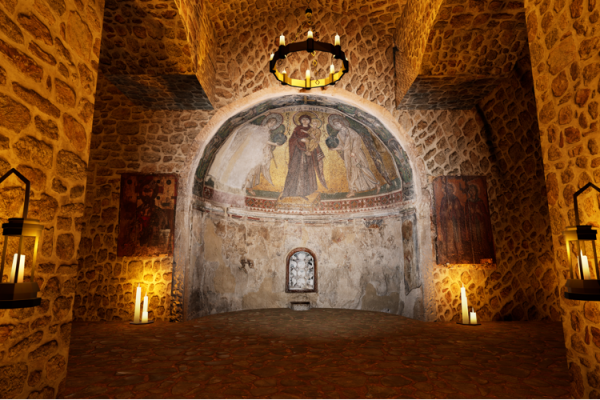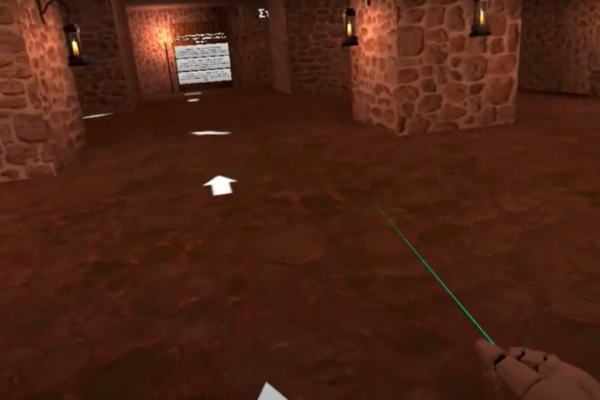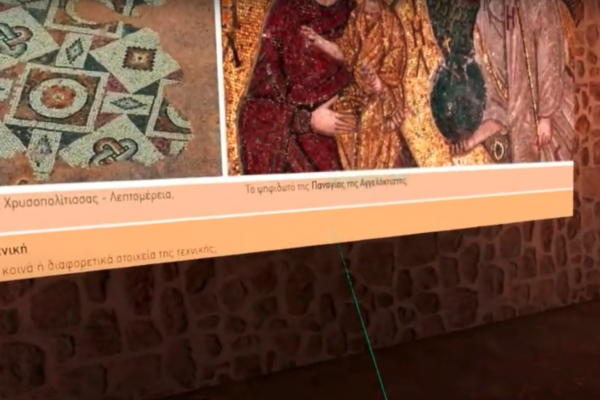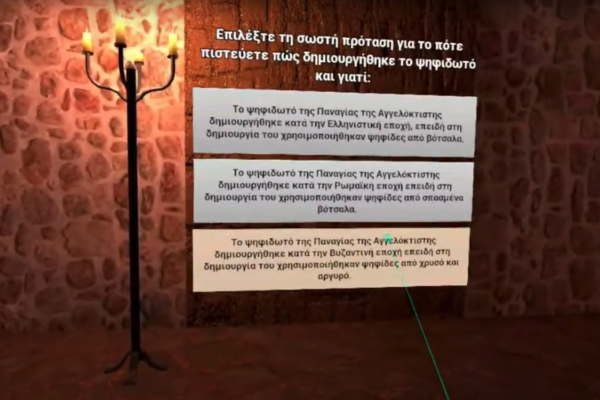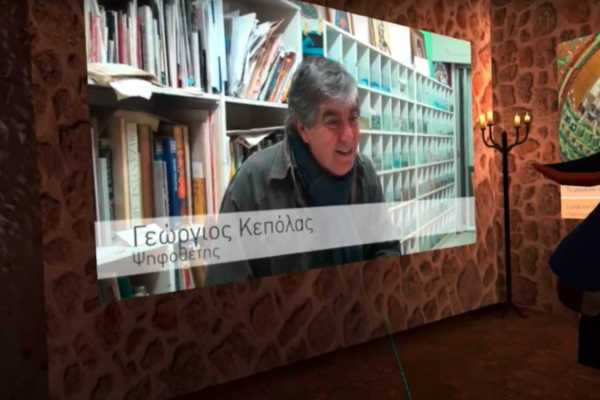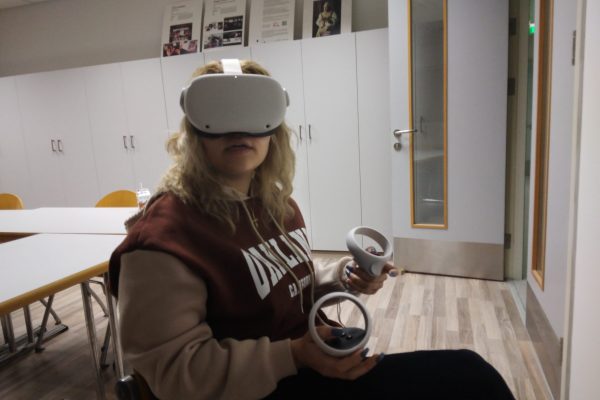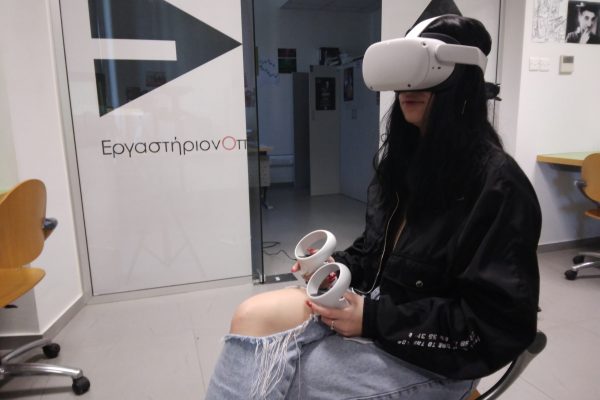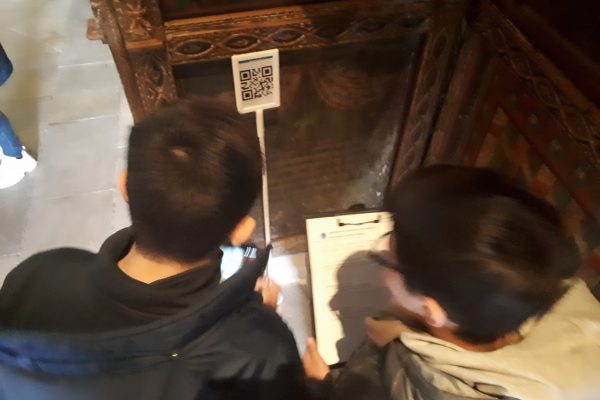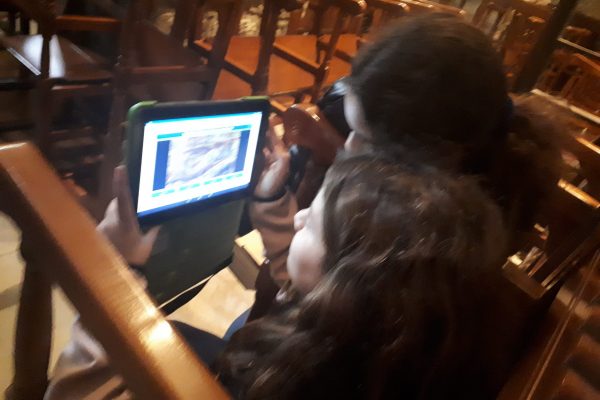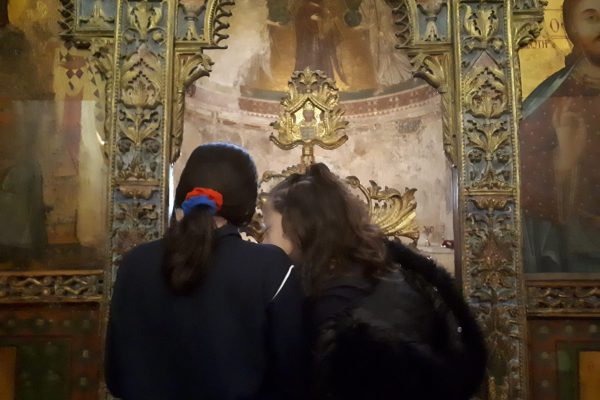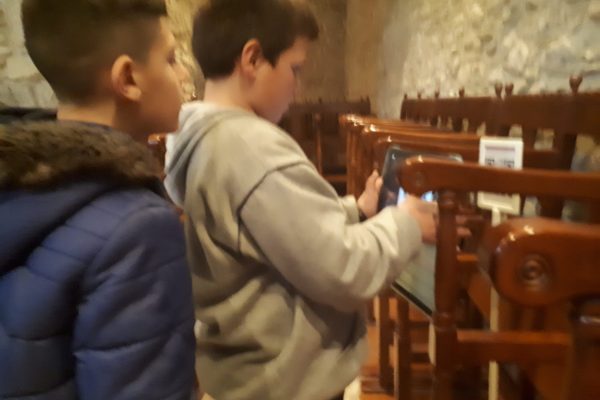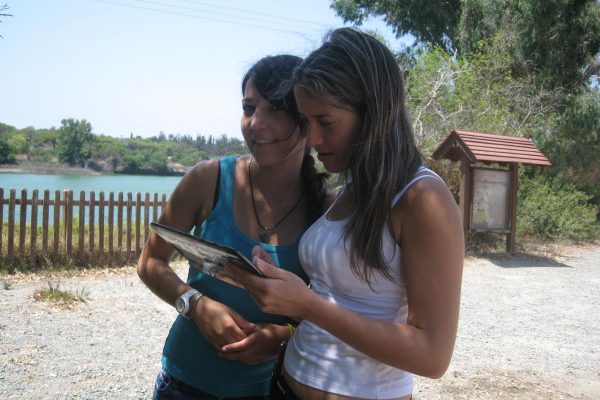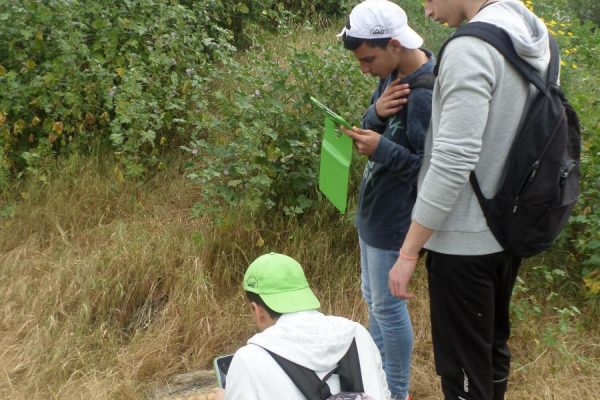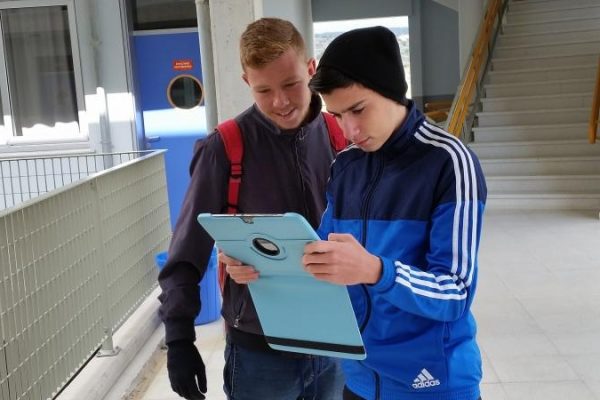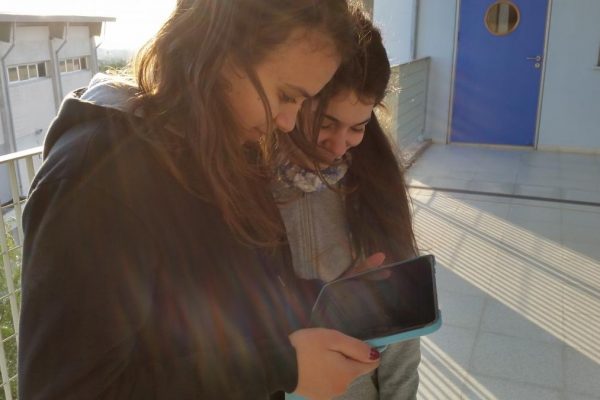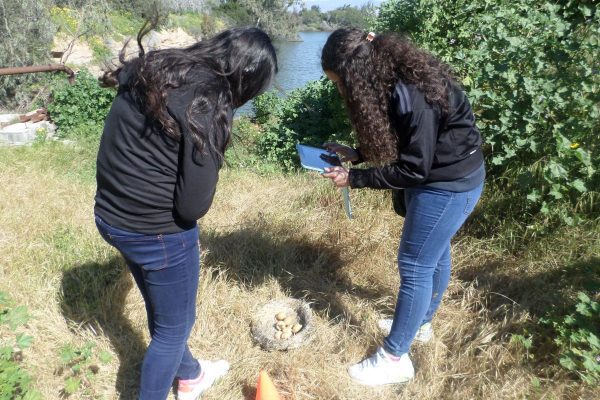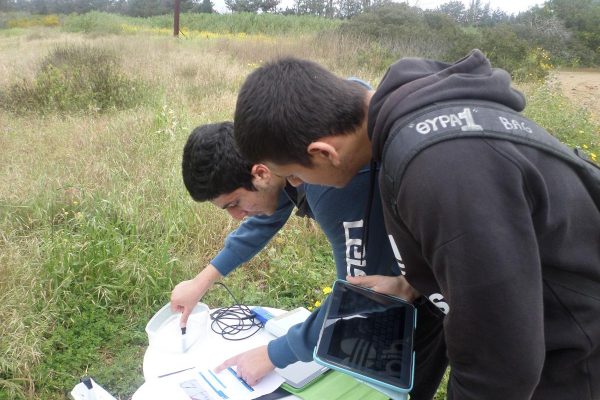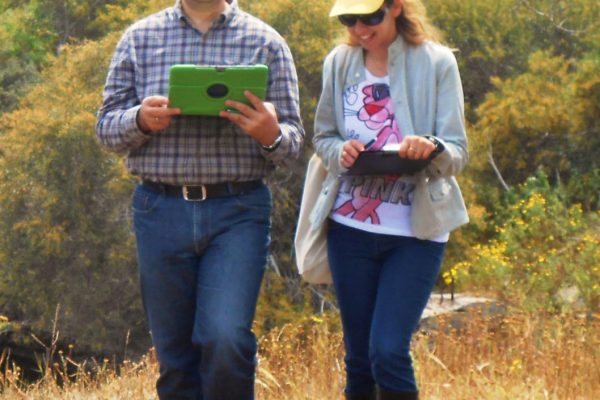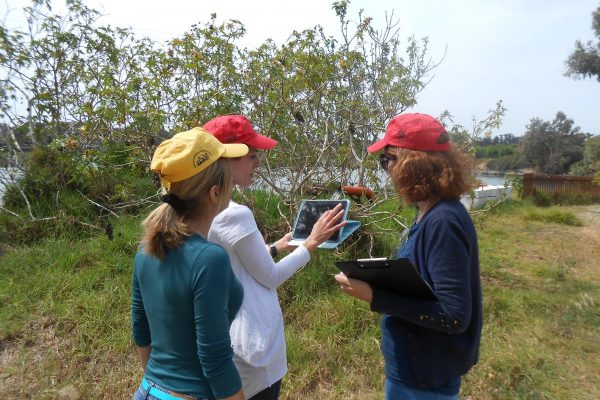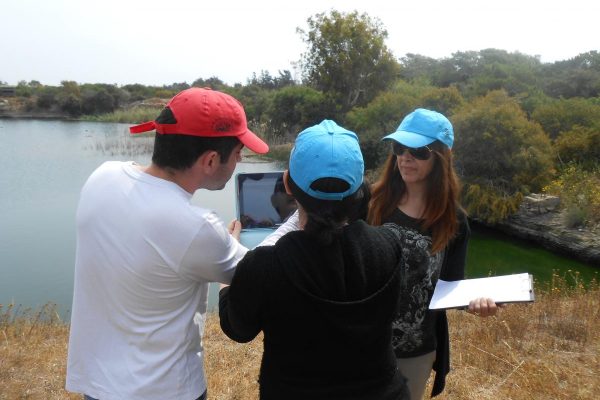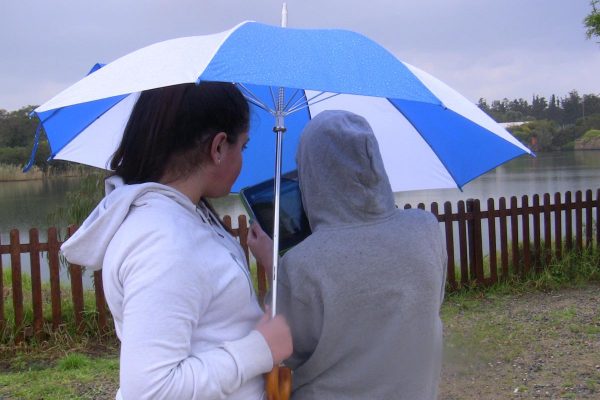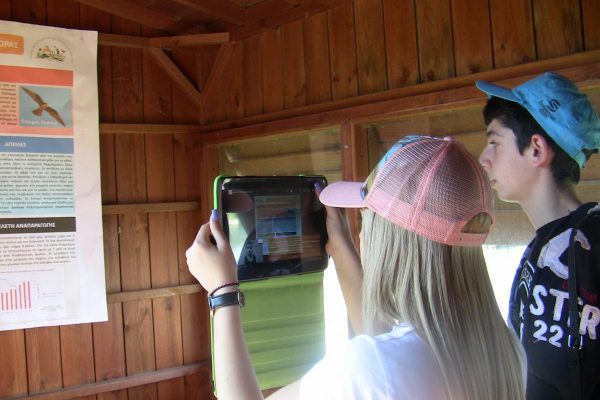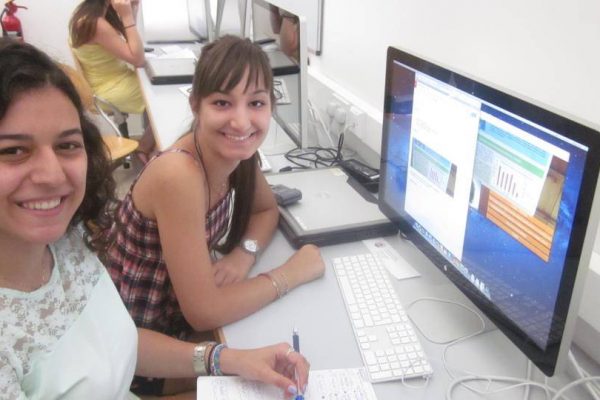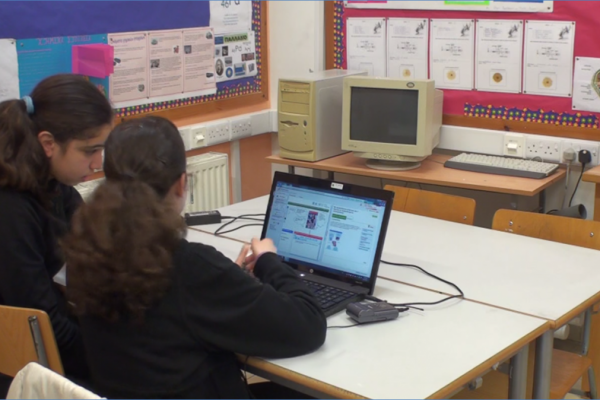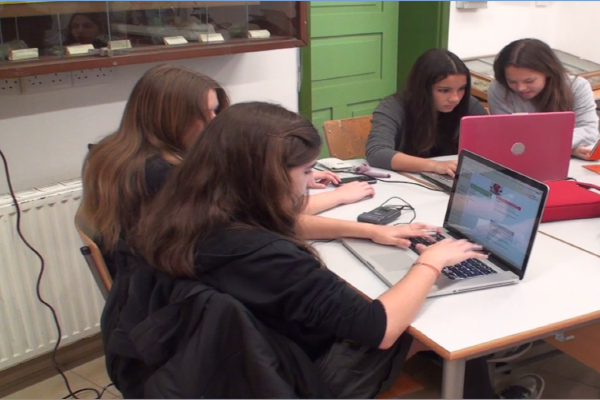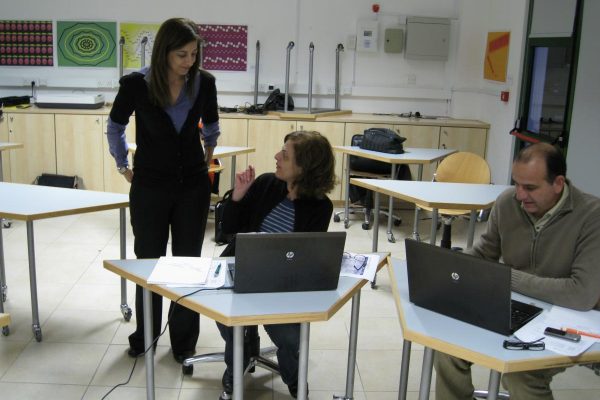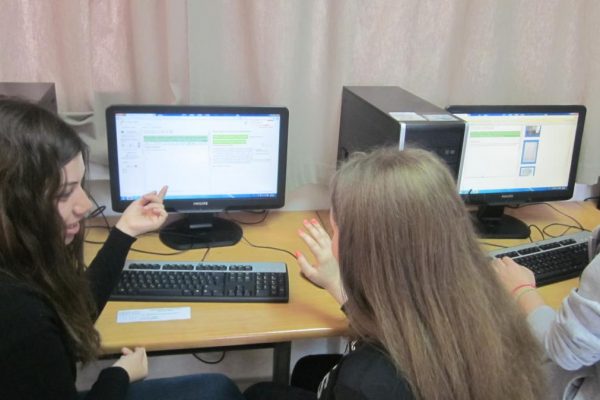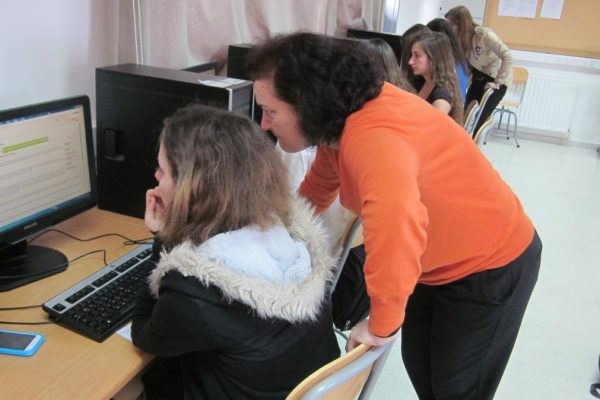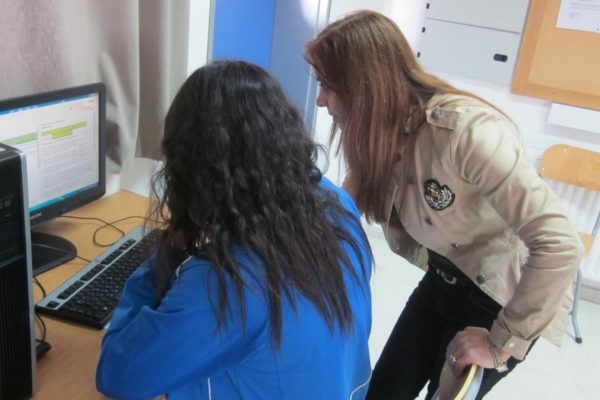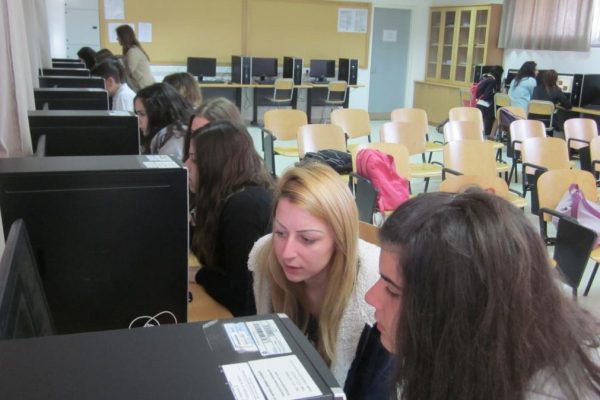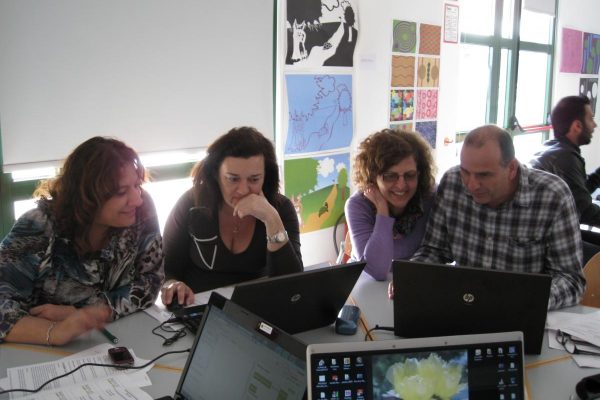The design, implementation and evaluation of new technologies and educational applications for teaching and learning are one of the main foci of the MCL group. Adopting a design-based approach, the MCL group has been focused during the previous years on the development of:
Below you can find more information about the educational platforms and applications.

AggeloktistiVR is a gamified virtual reality (VR) learning environment designed to support learning about the Byzantine art of the Church of Panagia Aggeloktisti located in the village of Kiti in Larnaka, Cyprus. The environment is based on prior design-based research led by Markos Souropetsis and Eleni Kyza, which led to the development of the CompARe mixed reality app and the inquiry learning environment “Tracing the footsteps of Angels” (Souropetsis, & Kyza, 2018; Souropetsis, & Kyza, 2021). AggeloktistiVR is a collaboration project between UCLan Cyprus and CUT. The VR system has been designed and developed at UCLan Cyprus by Pavel Telnov and Pascal Schovanez, under the supervision and contribution of Dr Louis Nisiotis. The educational content, the design of learning activities and the gamified scenario have been developed by Markos Souropetsis and Eleni Kyza at the Cyprus University of Technology. The system development is partially funded by the Centre for Cultural Preservation through Creative Practice at UCLan (UK).
In the VR environment, users are immersed in a series of learning activities designed to help them learn about Byzantine art and the significance of the church of Panagia Aggeloktisti. The environment supports the learning scenario entitled “Virtually tracing the footsteps of Angels”; the latter is an inquiry learning scenario around a unique 6th century ceiling mosaic where learners, guided by an avatar (non-player Character, NPC) who is a dedicated learning companion to the user, assume the role of art historians and are asked to date the 6th century A.D. ceiling mosaic by visiting four areas (learning stations) in the church. At each learning station, learners collect evidence and complete a quiz, before “unlocking” the next step and proceed to the next learning station.
The virtual experience is a single-user one, using head-mounted displays (HMD). Each learning station features different educational materials in various multimedia formats (e.g., videos, diagrams), providing information about the historical significance of the mosaic. In addition, the learner can view high-resolution images of other mosaics of the same or different era on the walls of the church inside the VR environment; in this way, the learner can apply the strategy of compare-and-contrast to examine the mosaics according to their production (technique) and style (symbolism).
For research purposes we developed a gamified and non-gamified version of the VR environment. The gamified version includes several gamification elements to support the learners’ motivation to engage and learn. Specifically, it includes: (a) a scoring system, as learners earn points by correctly completing a quiz (a multiple-choice question) at each learning station, (b) badges, as learners receive a badge by completing each learning station, regardless of their performance on the quizzes, and (c) a time limit (countdown), as learners have 30 minutes to complete the inquiry; when the time limit expires the learning environment locks and learners cannot further interact with it. The learner is awarded a completion badge and is allocated points for each correct answer at each learning station.
The virtual environment was designed to have a semi-realistic look and to resemble the interior of the church. For this purpose, the VR development team visited the church to capture and digitize its exterior and interior, including the key artifacts in display. The VR environment was developed using the “Unreal Engine” game engine and can be used with the Oculus Quest 2 standalone device; the latter is an all-in-one headset device, featuring a hand tracking system through two wireless controllers, which allowed the learners to interact with the avatar-based agent, the learning materials, as well as to navigate within the VR environment.
References
Souropetsis, M., & Kyza, E. A. (2018). CompARe: Gamified Mixed Reality Learning Environment. [Mobile App]. Cyprus University of Technology.
Souropetsis M. & Kyza E. A. (2021, June). Emerging technologies for learning at a cultural heritage site: The design of the CompARe mixed reality gamified learning environment. Paper presented at the RISE IMET International Conference on Emerging Technologies and the Digital Transformation of Museums and Heritage Sites, Nicosia, Cyprus.
For more information about AggeloktistiVR, you can read the following publications:
Souropetsis, M., Kyza, E., Nisiotis, L., Georgiou, Y., & Giorgalla, V. (2023). Investigating Students’ Motivation and Cultural Heritage Learning in a Gamified Versus Non-gamified VR Environment. In: Pelechano N., Liarokapis F., Rohmer D., Asadipour A. (Eds.), International Conference on Interactive Media, Smart Systems and Emerging Technologies (IMET) (pp. 41-44). The Eurographics Association. doi:10.2312/imet.20231255
Nisiotis, L., Souropetsis, M., Kyza, E.A. (2023). Embracing Cultural Heritage Through Virtual Reality: Development, Usability and Enjoyment Evaluation of a VR Environment for the Church of Panagia Aggeloktisti. In: De Paolis, L.T., Arpaia, P., Sacco, M. (Eds.), Extended Reality. XR Salento 2023 (pp. 227-246). Lecture Notes in Computer Science, vol 14219. Springer. doi:10.1007/978-3-031-43404-4_15
Georgiou, Y., Souropetsis, M., Kyza, E. A., & Nisiotis, L. (2023). Investigating students’ immersion in relation to cultural heritage learning in a virtual reality environment. In Blikstein, P., Van Aalst, J., Kizito, R., & Brennan, K. (Eds.), Proceedings of the 17th International Conference of the Learning Sciences – ICLS 2023 (pp. 1947-1948). International Society of the Learning Sciences. doi:10.22318/icls2023.646456

“CompARe” is a gamified mixed reality (MR) learning environment designed for supporting students during educational school visits to cultural heritage sites or museums. The environment supports various inquiry-based scenarios. Currently, CompARe supports the scenario entitled “Tracing the footsteps of Angels”; the latter is an inquiry learning scenario around a unique 6th century ceiling mosaic where students, working in pairs, assume the role of art historians and are asked to date the ceiling mosaic by visiting four digital agents (hotspots) which are located throughout the space. Hotspots contain multimedia content (text, images, video). The learning environment includes a number of gamification elements that enrich the learning experience: (a) Team name, (b) Scoring system, students earn points by completing each hotspot, (c) Badges, students gain badges by completing each hotspot, (d) Time limit (Countdown), students have a certain period of time to complete their inquiry, (e)Progress, students can monitor their progress during the mission, and (f) Leaderboard, students can track in real time their position in the overall standings of the teams participating in the inquiry. Besides the gamified design the learning environment also includes scaffolding design seeking to guide learners’ interactions and to help shape their thinking in productive ways. A comparison tool was included to help students during their inquiry and enrich their learning experience by giving them the ability to compare images of mosaics of the same and/or different era.
For more information about the CompARe gamified learning environment:
Souropetsis, M., & Kyza, E. A. (2024). CompARe: Design and Development of a Gamified Augmented Reality Learning Environment for Cultural Heritage Sites. ACM Journal on Computing and Cultural Heritage. https://doi.org/10.1145/3703917
Souropetsis M. & Kyza E. A. (2021, June). Emerging technologies for learning at a cultural heritage site: The design of the CompARe mixed reality gamified learning environment. Paper presentation presented at the RISE IMET International Conference on Emerging Technologies and the Digital Transformation of Museums and Heritage Sites, Nicosia, Cyprus [Online].

“Trace Readers” (Georgiou & Kyza, 2013) is a location aware AR application designed for supporting students’ AR location-based, outdoors investigations at a variety of sites with educational interest (e.g. archaeological and historical sites, environmental and ecological sites etc.). “Trace Readers” combines two different components: an application and an authoring tool that allows the development of custom AR learning environments for inquiry-based learning. The designer can create a video-based scenario within the AR learning environment, which includes multimedia-based content, such as text, videos, images or graphs. In addition, the authoring tool provides the opportunity to relate each data source with a location in the real world, thus creating physical hotspots which are triggered as learners approach them. This functionality allows designers to augment a real-world location by creating a dynamic layer on top of the physical space.
The AR learning environment on Trace Readers can be used online or offline; in the latter case no internet connection is required to run the application (app). “Trace Readers” also supports the collection of research data during the students’ learning activity.
For more information about the TraceReaders location-aware AR application, you can read the following publications:
Kyza, E. A., & Georgiou, Y. (2018). Scaffolding augmented reality inquiry learning: the design and investigation of the TraceReaders location-based, augmented reality platform. Interactive Learning Environments, 1-15. doi:10.1080/10494820.2018.1458039
Efstathiou, I., Kyza, E. A. & Georgiou, Y. (2018). An inquiry-based augmented reality mobile learning approach to fostering primary school students’ historical reasoning in non-formal settings. Interactive Learning Environments, 26(1). 22-41. doi:10.1080/10494820.2016.1276076
STOCHASMOS (Kyza & Constantinou, 2010) is a web-based learning platform for supporting students’ scientific reasoning through scientifically authentic investigations with an embedded authoring tool. Teachers and other instructional designers can use this system to design their own web-based investigations with reflective supports. The STOCHASMOS platform is available in English, Greek, Arabic, Dutch, German, Hebrew, and Swedish. The platform was the main product of the STOCHASMOS project which investigated the role of new technologies in supporting middle-school students’ reflective inquiry practices in science and, in specific, the role of technology-based supports in scaffolding students’ reasoning with scientific data. The research part of the project examined the interactions of the students with the web-based environment following a mixed-methods approach.
For more information about the STOCHASMOS web-based learning platform, you can read the following publications:
Kyza, E. A., Constantinou, C. P., & Spanoudis, G. (2011). Sixth graders’ conceptual understanding of iotic and abiotic factors during a disturbance in an ecosystem. International Journal of Science Education, 1‐37. doi:10.1080/09500693.2010.550951
Kyza, E. A. (2009). Middle‐School Students’ Reasoning About Alternative Hypotheses in a Scaffolded, Software‐Based Inquiry Investigation. Cognition and Instruction, 27(4), 277‐311. doi: 10.1080/07370000903221718





